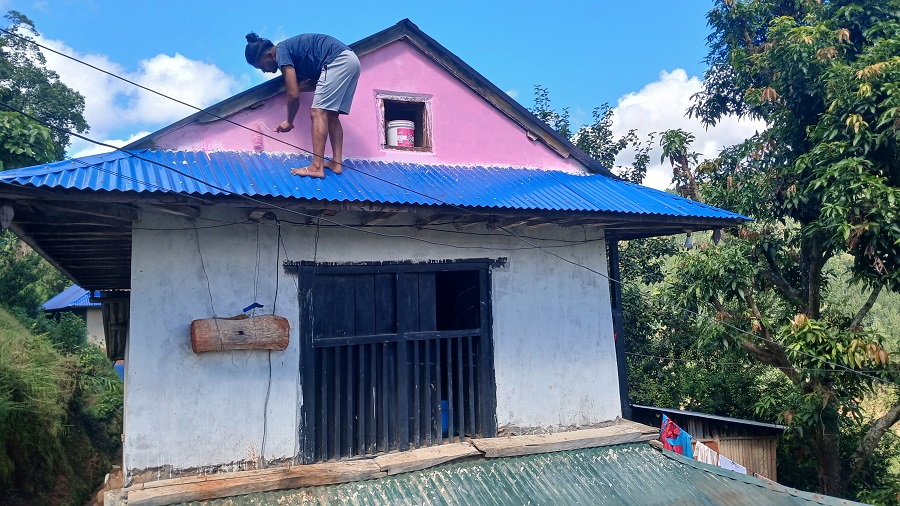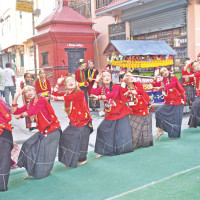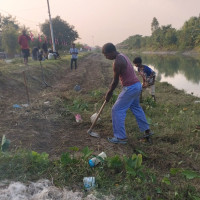- Monday, 20 October 2025
Tradition of using white clay and red-ochre vanishing
By Gajendra Gurung,Khajura, Oct. 4: As the much-awaited festival, Dashain, draws near, a vibrant energy has begun to fill the rural villages of the hilly region.
For generations, Dashain has been a time of decorating homes with the traditional kameromato (white clay) and ratomato (red-ochre).
Yet, as modernity reaches even the most remote corners of Nepal, these age-old customs are gradually vanishing.
For centuries, Nepali villagers would decorate their homes for Dashain using kamero and ratomato, materials that symbolised purity and festivity.
Houses built with stone and mud were meticulously covered in a white sheen of kameromato on the upper walls, while the earthy red of ratomato graced the lower sections, creating a charming and welcoming facade.
This tradition not only prepared homes for the festival but also strengthened community bonds, as villagers would venture out together to collect these materials from nearby hills and forests.
Narayan Pandey, a resident of Mahendradeep in Airawati Rural Municipality, recalls those days with fondness.
“Until a few years ago, all the villagers used to go to Dharapani in groups to collect kamero,” he said. “We would walk for an hour uphill, enjoying each other’s company, and then bring the clay back down to the village. It was a community effort, and seeing the kamero at home after the long trek felt rewarding.”
The kamero mato was typically sourced from Dharapani, while the ratomato was collected from Okhaldhunga.
The stark white and red hues that covered the homes made them look festive.
However, the rise of concrete building techniques and the increasing use of cement have pushed aside these traditions. Now, rather than heading into the hills for kamero and ratomato, villagers purchase synthetic paints to cover their cement-plastered houses.
Lokmaya Gurung, another local resident, also reminisced about the festive preparations.
“During Dashain, we would go far to gather the kamero and red-orche. We used the kamero to cover the upper part of the house and the ratomato for the lower part. But now, people have replaced the mud in their old homes with cement, and synthetic paint is used instead of the traditional clay,” she added.
The transition to modern materials has had a profound effect on rural life. In the past, Dashain preparations extended beyond the decoration of homes. Villagers returned from cities and abroad to celebrate, students home from school played on traditional rotey ping (wooden ferris wheel) and linge ping (swing built with bamboos) and the food was prepared by pounding rice and grinding grains using traditional mills.
















